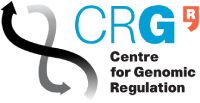About the Project
"ChromDesign” is a European innovative and interdisciplinary Research and Training network, which aims to characterize the impact of the 3D chromatin organization on gene regulation during cellular differentiation and in several human disorders, and to train junior researchers in the biomedical field, either in academia or in the private sector. The "ChromDesign" training programme will foster mobility across countries, disciplines and sectors. Through secondments and network-events, we will ensure that all ESRs have opportunities for exposure to different disciplines and environments: academia, industry, design and communication, hospitals, publishing, and non-for-profit funding entities. Most network training will be based around five summer and winter schools that combine hands-on research workshops, academic lectures as well as transferable skills, and innovation and entrepreneurship training sessions.
Description subproject ESR8:
Objectives
Understand how histone H3 variants organise in the genome and in space throughout the cell cycle, to define chromosome and nuclear territories. Histones H3 variants are closely related in terms of sequence, yet they are handled by distinct chaperones that channel them into specific deposition pathways during the cell cycle. As a result, nucleosomes containing particular H3 variants segregate in the genome into different territories. How their genomic distribution impacts chromosome folding, spatial segregation of nuclear territories and ultimately chromatin function have remained open questions.
Methodology
To gain understanding into the importance of H3 variants and relevant chaperones in chromosome architecture and function, the ESR will:
• Compare epigenomic maps of the variants to Hi-C contact maps, to define whether a co-segregation of particular variants occurs with topological domains.
• Compare Hi-C maps to the spatial distribution of variants at specific sites in high resolution
• Evaluate the role of selected histone chaperones in guiding the genomic distribution of variants at specific sites, and their impact on nuclear organisation. The experimental approaches used will be:
1. ChIP-seq to map specific histone variants in model human and mouse cell lines.
2. Bioinformatics to compare their enrichment related to Hi-C contact maps.
3. Imaging of specific chromatin territories with FISH/merFISH and histone variants in super-resolution microscopy (STORM)
4. Modelling approaches to understand their spatial distribution related to chromosome territories.
5. CRISPR/Cas9 and degron strategies to perturb selected chaperones.
Expected Results
Improved understanding of the spatial organisation of chromatin domains defined by histone variants. Identifying the role of particular histone chaperones as a flexible network ensuring this organisation and its plasticity.
Planned Secondments:
CNAG-CRG, Spain (2x 1 month):
Hi-C analysis and comparison to ChIP-seq data.
FUNDACIÓ PRIVADA D’ESTUDIS I RECERCA ONCOLÒGICA – FERO, Spain (2 weeks):
Learning about fundraising and research evaluation process.
Eligibility criteria:
• Applicants may be a national of a Member State, of an Associated Country or of any other third country.
• The candidate should hold an academic degree that enables her/him to undertake doctoral studies. Preference is given to applicants with MSc or equivalent degree.
• At the time of recruitment* by the host organisation, candidates must be in the first four years (full-time equivalent research experience**) of their research careers and not yet have been awarded a doctoral degree.
• At the time of recruitment* by the host organisation, candidates must not have resided or carried out their main activity (work, studies, etc.) in the country of their host organisation for more than 12 months in the 3 years immediately prior to the reference date.
PLEASE NOTICE THAT AN APPLICATION IS SOLELY POSSIBLE VIA THE ONLINE APPLICATION FORM (WWW.CHROMDESIGN.EU)
Funding Notes
• Depending on the hosting institute, individual projects start between November 2018 and August 2019.
Duration
• The positions are fully funded for 36 months by the European Comission under the H2020 Marie Curie Innovative Training Network Programme.
Salary
• Marie Curie ITNs provide a highly competitive salary to the ESR, including a competitive monthly living and mobility allowance and (if eligible) a monthly family allowance.
References
Clement, C. et al. High-resolution visualization of H3 variants during replication reveals their controlled recycling. Nat Commun 9, 3181, doi:10.1038/s41467-018-05697-1 (2018).
Yadav, T., Quivy, J. P. & Almouzni, G. Chromatin plasticity: A versatile landscape that underlies cell fate and identity. Science 361, 1332-1336, doi:10.1126/science.aat8950 (2018).

 Continue with Facebook
Continue with Facebook

